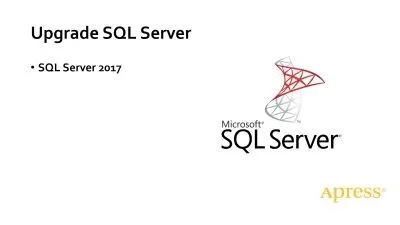Master on MySQL database: In-Depth Exploration
Mallikarjun Gunda
2:23:20
Description
Understanding about MySQL database from basics to expert level.
What You'll Learn?
- Understanding databases and their role in applications.
- Retrieving data using SELECT statements.
- Advanced Queries - Working with joins to combine data from multiple tables.
- Database Design - Normalization and denormalization
- Transactions and Concurrency - ACID properties (Atomicity, Consistency, Isolation, Durability)
- Stored Procedures and Functions
- Security and Optimization
- Advanced Topics - Triggers and events for automation
- Real-world Applications - Building and designing databases for specific applications
- Best Practices and Troubleshooting
Who is this for?
What You Need to Know?
More details
DescriptionMastering MySQL database involves a comprehensive understanding of its architecture, features, and various aspects of database management. Here's an in-depth exploration to help you on your journey:
1. Understanding MySQL Basics:
Database Concepts: grasp fundamental concepts like tables, rows, columns, indexes, and relationships.
Data Types: familiarize yourself with different data types MySQL supports.
2. Installation and Configuration:
Installation: learn how to install MySQL on different operating systems.
Configuration: understand and configure key parameters in my.cnf for optimal performance.
3. SQL Fundamentals:
Querying: master SELECT statements, filtering, sorting, and joining tables.
Data Manipulation Language (DML): INSERT, UPDATE, DELETE operations.
Data Definition Language (DDL): CREATE, ALTER, DROP statements.
4. Indexes and Optimization:
Indexes: comprehend index types (B-Tree, FULLTEXT, etc.) and their impact on performance.
Query Optimization: use EXPLAIN to analyze and optimize queries.
5. Normalization and Database Design:
Normalization: understand normalization forms to design efficient database schemas.
ER Modeling: grasp Entity-Relationship modeling for effective database design.
6. Transactions and Concurrency:
ACID Properties: understand and implement Atomicity, Consistency, Isolation, and Durability.
Concurrency Control: manage simultaneous transactions using locking mechanisms.
7. Security:
User Management: create and manage user accounts with appropriate privileges.
Authentication and Authorization: configure secure authentication methods and define access controls.
8. Backup and Recovery:
Backup Strategies: implement regular backups using tools like mysqldump.
Point-in-Time Recovery: learn how to recover databases to a specific point in time.
9. High Availability and Replication:
Replication: set up and manage master-slave replication for redundancy and scalability.
Load Balancing: implement load balancing for distributing database traffic.
10. Monitoring and Performance Tuning:
MySQL Performance Schema: use performance schema for monitoring and troubleshooting.
Query Cache and Buffer Pool: tune key parameters for optimal performance.
11. Advanced Topics:
Stored Procedures and Functions: create and use stored procedures and functions.
Triggers: understand and implement triggers for automated actions.
Partitioning: optimize large tables by partitioning data.
12. Community and Documentation:
MySQL Community: engage with the MySQL community for support and knowledge sharing.
Official Documentation: refer to the MySQL official documentation for in-depth information.
13. MySQL Tools:
Command-Line Tools: become proficient in using tools like mysql, mysqldump, etc.
GUI Tools: explore GUI tools like MySQL Workbench for visual database management.
14. Scalability:
Sharding: understand and implement sharding for horizontal scalability.
Caching Strategies: implement caching mechanisms for improved performance.
15. Continuous Learning:
Stay Updated: MySQL evolves, so keep abreast of the latest features and best practices.
Online Courses and Certifications: consider taking advanced courses and certifications to validate your skills.
Conclusion:
Mastering MySQL requires a combination of theoretical knowledge and hands-on experience. Practice with real-world scenarios and projects, participate in the MySQL community, and continually update your skills to stay at the forefront of database management.
Who this course is for:
- Individuals with little to no prior experience in databases or SQL who want to build a strong foundation in MySQL from scratch.
- Those who have some familiarity with databases or SQL but want to deepen their understanding and proficiency in MySQL.
- Software developers or programmers seeking to expand their skills by learning database management and SQL in the context of MySQL.
- Professionals already working or aspiring to work in database administration who want to enhance their knowledge and expertise in MySQL.
- Those pursuing degrees or careers in information technology, computer science, software engineering, or related fields, aiming to gain a strong understanding of databases.
- Individuals interested in data management, data analysis, or working with databases for personal or professional projects.
Mastering MySQL database involves a comprehensive understanding of its architecture, features, and various aspects of database management. Here's an in-depth exploration to help you on your journey:
1. Understanding MySQL Basics:
Database Concepts: grasp fundamental concepts like tables, rows, columns, indexes, and relationships.
Data Types: familiarize yourself with different data types MySQL supports.
2. Installation and Configuration:
Installation: learn how to install MySQL on different operating systems.
Configuration: understand and configure key parameters in my.cnf for optimal performance.
3. SQL Fundamentals:
Querying: master SELECT statements, filtering, sorting, and joining tables.
Data Manipulation Language (DML): INSERT, UPDATE, DELETE operations.
Data Definition Language (DDL): CREATE, ALTER, DROP statements.
4. Indexes and Optimization:
Indexes: comprehend index types (B-Tree, FULLTEXT, etc.) and their impact on performance.
Query Optimization: use EXPLAIN to analyze and optimize queries.
5. Normalization and Database Design:
Normalization: understand normalization forms to design efficient database schemas.
ER Modeling: grasp Entity-Relationship modeling for effective database design.
6. Transactions and Concurrency:
ACID Properties: understand and implement Atomicity, Consistency, Isolation, and Durability.
Concurrency Control: manage simultaneous transactions using locking mechanisms.
7. Security:
User Management: create and manage user accounts with appropriate privileges.
Authentication and Authorization: configure secure authentication methods and define access controls.
8. Backup and Recovery:
Backup Strategies: implement regular backups using tools like mysqldump.
Point-in-Time Recovery: learn how to recover databases to a specific point in time.
9. High Availability and Replication:
Replication: set up and manage master-slave replication for redundancy and scalability.
Load Balancing: implement load balancing for distributing database traffic.
10. Monitoring and Performance Tuning:
MySQL Performance Schema: use performance schema for monitoring and troubleshooting.
Query Cache and Buffer Pool: tune key parameters for optimal performance.
11. Advanced Topics:
Stored Procedures and Functions: create and use stored procedures and functions.
Triggers: understand and implement triggers for automated actions.
Partitioning: optimize large tables by partitioning data.
12. Community and Documentation:
MySQL Community: engage with the MySQL community for support and knowledge sharing.
Official Documentation: refer to the MySQL official documentation for in-depth information.
13. MySQL Tools:
Command-Line Tools: become proficient in using tools like mysql, mysqldump, etc.
GUI Tools: explore GUI tools like MySQL Workbench for visual database management.
14. Scalability:
Sharding: understand and implement sharding for horizontal scalability.
Caching Strategies: implement caching mechanisms for improved performance.
15. Continuous Learning:
Stay Updated: MySQL evolves, so keep abreast of the latest features and best practices.
Online Courses and Certifications: consider taking advanced courses and certifications to validate your skills.
Conclusion:
Mastering MySQL requires a combination of theoretical knowledge and hands-on experience. Practice with real-world scenarios and projects, participate in the MySQL community, and continually update your skills to stay at the forefront of database management.
Who this course is for:
- Individuals with little to no prior experience in databases or SQL who want to build a strong foundation in MySQL from scratch.
- Those who have some familiarity with databases or SQL but want to deepen their understanding and proficiency in MySQL.
- Software developers or programmers seeking to expand their skills by learning database management and SQL in the context of MySQL.
- Professionals already working or aspiring to work in database administration who want to enhance their knowledge and expertise in MySQL.
- Those pursuing degrees or careers in information technology, computer science, software engineering, or related fields, aiming to gain a strong understanding of databases.
- Individuals interested in data management, data analysis, or working with databases for personal or professional projects.
User Reviews
Rating
Mallikarjun Gunda
Instructor's Courses
Udemy
View courses Udemy- language english
- Training sessions 33
- duration 2:23:20
- Release Date 2024/05/17








![[NEW] Learn Spring Boot 3, JDBC, JPA, MySQL, MongoDB, Kafka](https://traininghub.ir/image/course_pic/40550-x225.webp)





